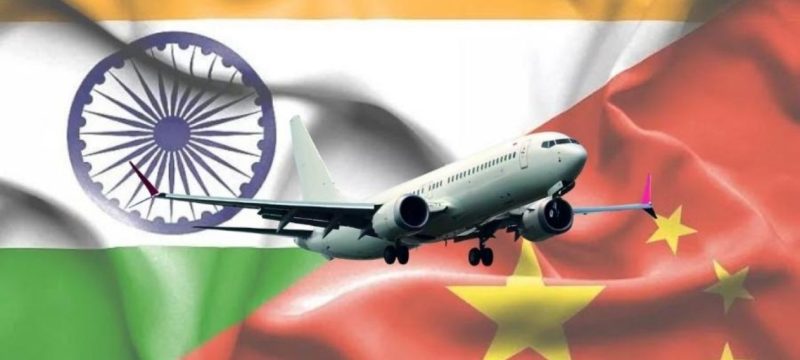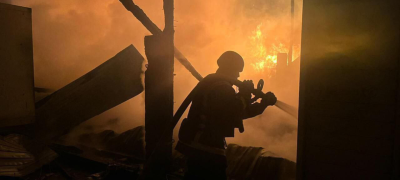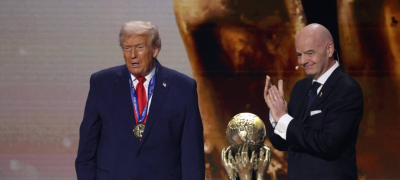After more than five years of diplomatic chill and economic decoupling, India and China have finally resumed direct commercial flights, marking a cautiously optimistic moment in their fraught bilateral relationship. The move, while symbolic, comes amid complex geopolitical tensions, trade dependencies, and cautious hope from both business communities that the skies reopening could signal the start of a broader thaw.
A Long-Awaited Takeoff
On October 26, 176 passengers boarded an IndiGo flight from Kolkata to Guangzhou, marking the first direct flight between India and China since 2020. The event carried more than just passengers — it carried the weight of years of stalled diplomacy, broken business links, and strained public sentiment.
For Indian entrepreneurs like Varun Kedia, who runs a plastics manufacturing company in Gujarat, the flight restoration offers a lifeline. Before the pandemic and border clashes in Galwan Valley (June 2020), he regularly visited China to procure cost-effective molding machines. But with travel suspended and visas restricted, Kedia was forced to rely on pricier domestic machinery.
“The dependency on China is likely to come back to a certain extent,” he admits. “We should be two brothers in arms — but that is idealistic.”
A Symbol of Hope — and Hesitation
The resumption of flights is viewed as a diplomatic gesture following Indian Prime Minister Narendra Modi’s August visit to China, his first since the deadly border skirmishes that froze bilateral ties. It also coincides with ongoing talks to relax visa restrictions, a move that could help reconnect entrepreneurs, students, and professionals on both sides.
However, analysts warn that while the skies are open again, deep-rooted mistrust remains.
“Direct flights have a huge, disproportionate amount of signaling effect,” said Santosh Pai, an expert on India-China trade. “But we’re never going back to 2019. India’s primary stance toward China will always be filtered through national security.”
Indeed, beneath the optimism lie significant policy and political constraints. India continues to impose strict visa vetting for Chinese nationals, with only 2,000 visas issued in 2024 — a staggering drop from 200,000 in 2019. China, by contrast, has maintained an open-door policy, issuing 265,000 visas to Indian citizens in 2025.
Echoes of Better Days
Before tensions erupted, India and China shared thriving business and academic exchanges. In 2019, nearly 890,000 passengers flew directly between the two nations, while another 1.2 million traveled indirectly. Flights were filled with business delegations, medical students, and professionals in tech and trade.
“We were talking about flights to Tier 2 Indian cities like Ahmedabad and Hyderabad,” recalled Ramachander Poodipeddi, an executive with a Chinese multinational. “There was real optimism. We were even discussing twin-city partnerships.”
That optimism collapsed after the 2020 clashes, followed by New Delhi’s clampdown on Chinese apps, investments, and infrastructure projects. Direct flights were suspended, and Chinese engineers critical to India’s solar, electronics, and telecom sectors struggled to obtain visas. Many Indian companies, especially in manufacturing and technology, felt the strain.
“We are highly dependent on China for technology for the foreseeable future,” said Vineet Mittal, founder of Navitas Solar. “The visa restrictions have hurt productivity and innovation.”
Barriers Still in the Air
Despite new flights, the visa issue remains the biggest roadblock.
“For a mainland Chinese, India is probably the most difficult visa to get in the world,” said Ye Zhixiong, vice president of the Guangdong Chamber of Commerce in India. “Some applications have been pending for three years.”
Even academics face the same barriers. Lin Minwang of Fudan University noted that several Chinese scholars missed conferences in India due to delayed approvals, calling the new flights “more economic necessity than diplomatic goodwill.”
Experts agree that Washington’s tariffs on China and the global trade realignments have nudged both countries to reconsider limited cooperation.
“Modi’s China policy is largely pegged to India-U.S. and China-U.S. relations,” Lin said. “Economic pragmatism is shaping this temporary thaw.”
Challenges to Rebuilding Trust
The collapse in people-to-people exchanges has been severe. According to India’s Ministry of External Affairs, the number of Indian students in China plummeted from 200,000 in 2019 to just 5,000 in 2024. Meanwhile, Chinese investment — once as high as $8 billion, per Brookings Institution data — has stagnated.
Chinese scholar Liu Zongyi warned that this isolation has created “an information cocoon.”
“Few Indians now truly understand modern China,” he said. “That’s dangerous for long-term diplomacy.”
In India, some policymakers remain wary that easing ties could undermine national efforts toward self-reliance under Modi’s Atmanirbhar Bharat initiative.
“You’ve got to depend on China until you become independent,” said Poodipeddi, “but I don’t see that path to independence yet.”
Economic Reality: Cooperation Over Confrontation
Still, many business leaders argue that economic logic should override political rigidity. Entrepreneurs like Vikas Yadav, who runs a manufacturing firm, warn that India risks missing out on opportunities that neighbors like Pakistan are seizing.
“BYD wanted to expand in India,” Yadav said. “But with all the roadblocks, they went to Pakistan instead. Others will win while we lose out.”
Economists echo his concern, pointing out that India’s trade deficit with China has ballooned to $99.2 billion as of March 2025. Allowing Chinese investment, particularly in joint ventures, could help bridge that gap and strengthen India’s domestic manufacturing base.
“Joint ventures are a path to self-sufficiency,” said Rahul Sharma, co-founder of Zetwerk. “It’s how we can build our own ecosystem.”
Santosh Pai added that India could emulate Apple’s “China plus one” strategy — partnering with Chinese suppliers to build capacity within India rather than shutting them out entirely.
A New Chapter — Or a Cautious Rehearsal?
While the reopening of direct flights is being celebrated as a diplomatic win, the road to true normalization remains long and uncertain. Years of mistrust, political posturing, and security tensions cannot be erased by a few commercial routes.
But the fact that planes are flying again — after years of silence in the skies — is a start.
“We have to understand the culture to stop the friction,” said Gurpreet Singh, an Indian professional working at Xiaomi in Beijing. “It’s not easy, but as the Chinese saying goes — there are always more solutions than problems.”
As India and China cautiously rebuild their flight paths, the world watches to see whether the journey ahead will be one of reconciliation or renewed turbulence.
In other news also read about China’s Billions Set to Transform Pakistan’s Railway Infrastructure









